Adjustment of the sealing springs for hydraulic steering pump (Ford 750) [ESP/ENG]
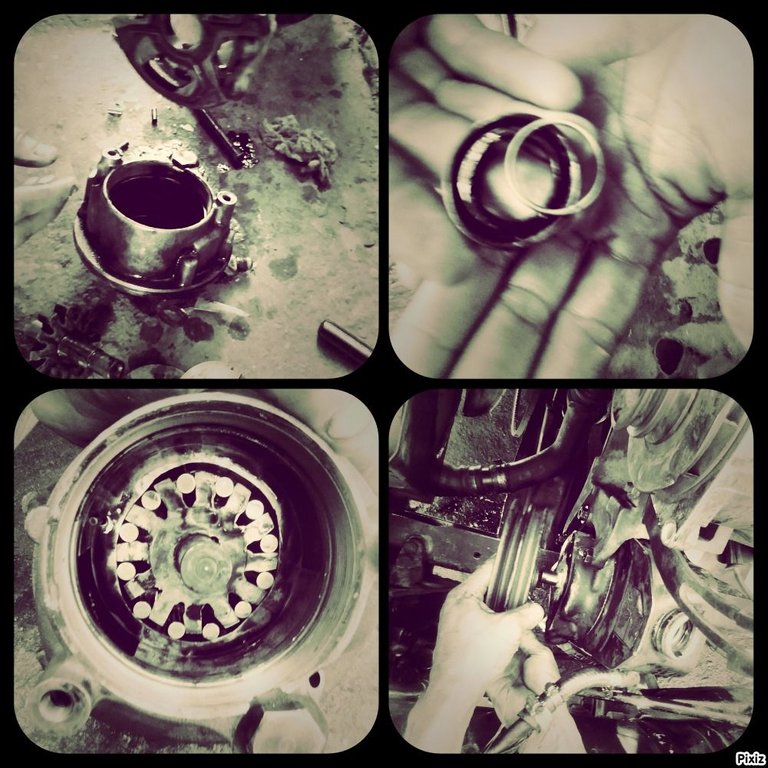
Se le hizo ajustes al resorte de los retenes de una bomba hidráulica de dirección, sabemos que es fácil sustituir piezas pero quizás el gran obstáculo que una persona puede tener son los altos costos de los repuestos, por esa razón muchas veces se hace necesario repararlos.
Las bombas hidráulicas permiten que sea más fácil maniobrar el volante del vehículo (en este caso camión). El motivo de este ajuste es la fuga de aceite así que se vió en la necesidad de revisar para evitar daños en el sector - también llamada caja de dirección - esto sería un riego si no se chequea, pues el dejar que la fuga continúe esto haría que el sector se quede sin lubricación y por ende la dirección del vehículo se bloquearía lo que ocasionaría un accidente, es de mencionar que éste modelo de bomba tiene el depósito de aceite.
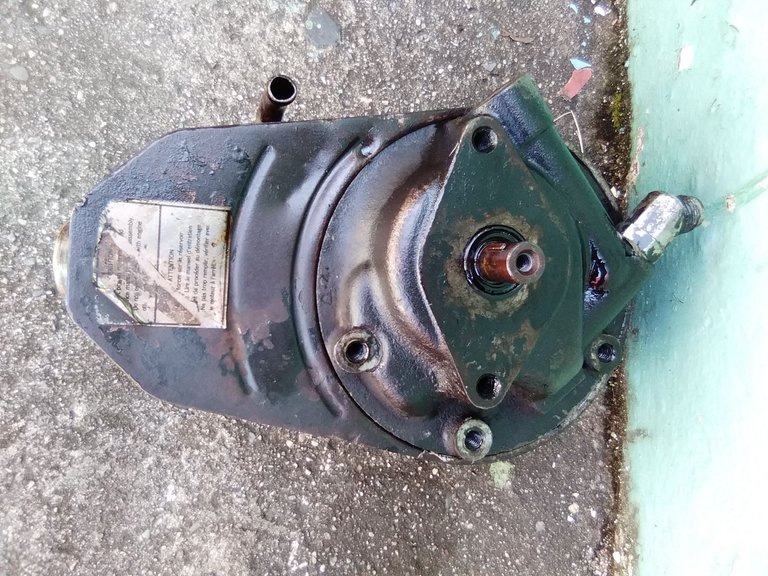
Al desinstalar la bomba de dirección Se debe sacar el aceite al depósito de aceite para separarlo de la bomba.
 | 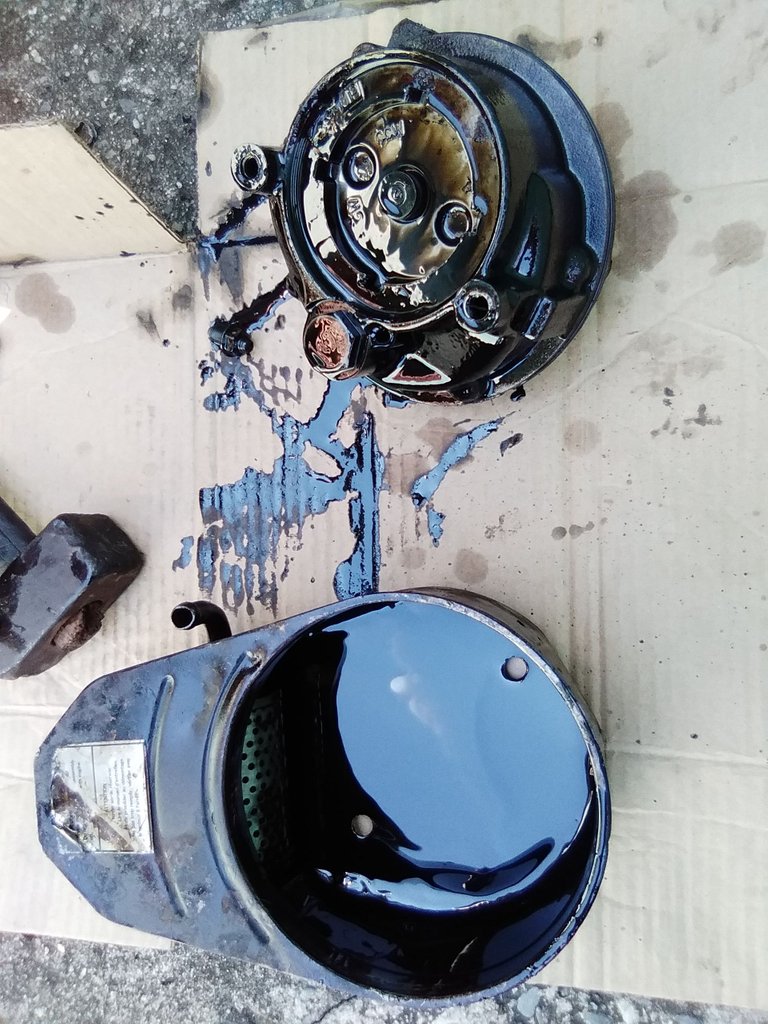 |
Luego se quitó el anillo que sella la bomba, dentro nos encontramos con piezas que es de gran importancia saber el orden en que van colocadas a la hora de armar, tiene una guía que permite mejor ubicación de estás piezas, al retirarlas de la carcasa se puede ver la condición física de cada una ya que no deben estar desgastadas, ralladas ni careadas.
 |  |
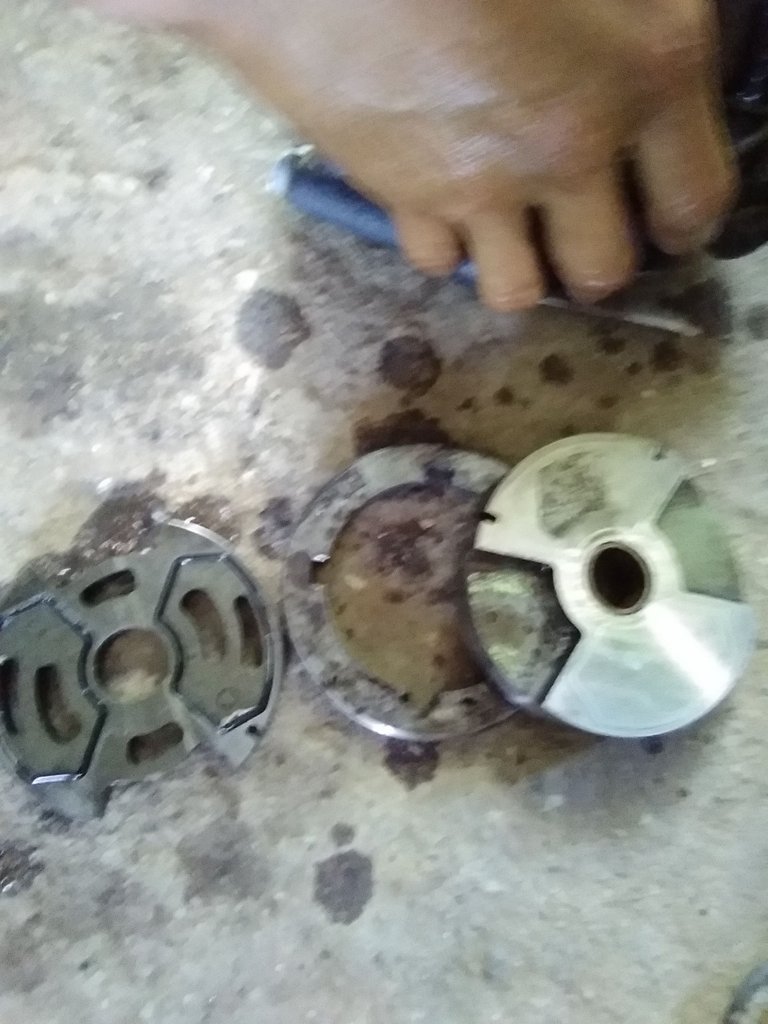 | 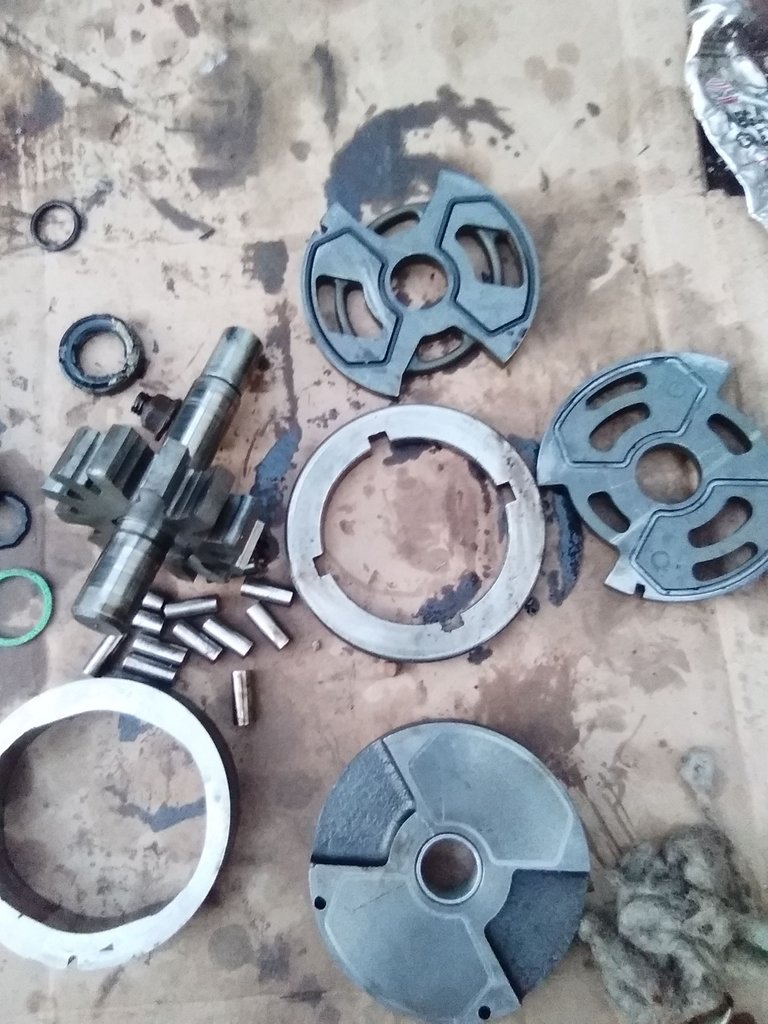 |
Se extrajo con cuidado los dos retenes (estoperas) usando un destornillador de paleta y dándole leves golpes, y luego revisar su estado pues si están muy sensibles no se recomienda recortar el resorte sino sustituirlas de inmediato de ese modo evitar que queden fugas de aceite.
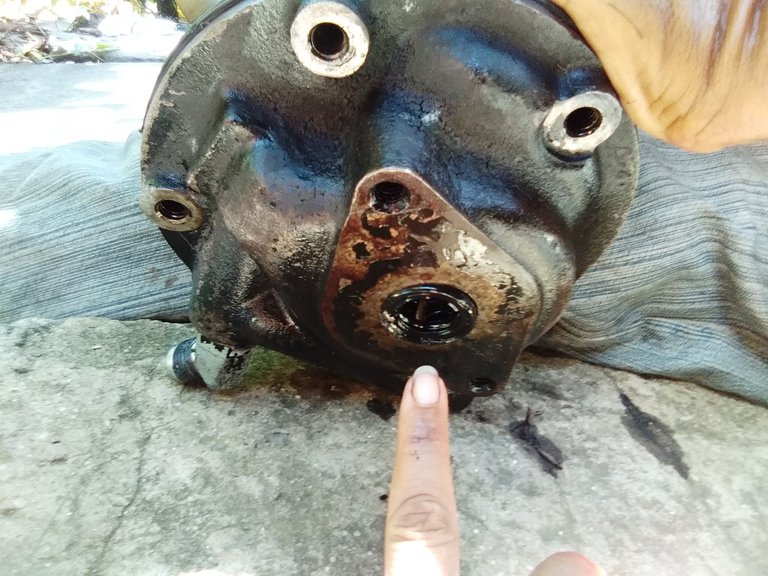 | 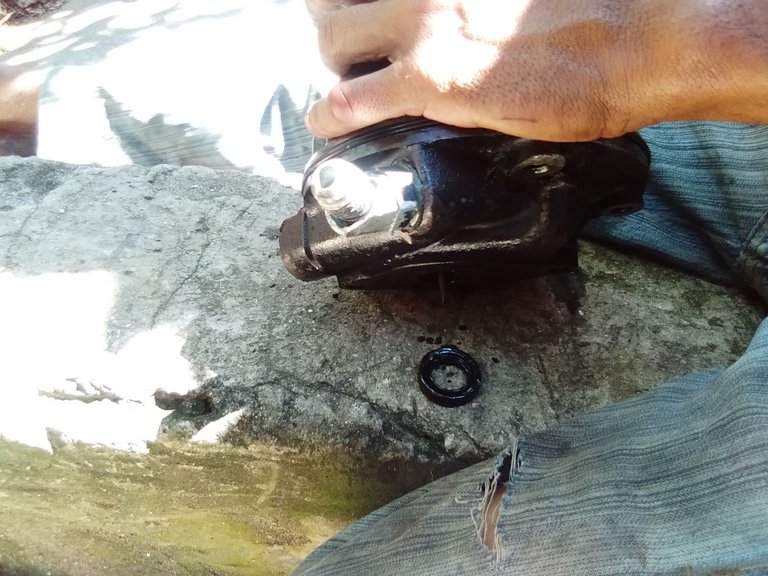 |
Luego de recortar los resortes se volvieron a colocar los retenes o estoperas. Se volvió armar pieza por pieza y colocarle el depósito del aceite.
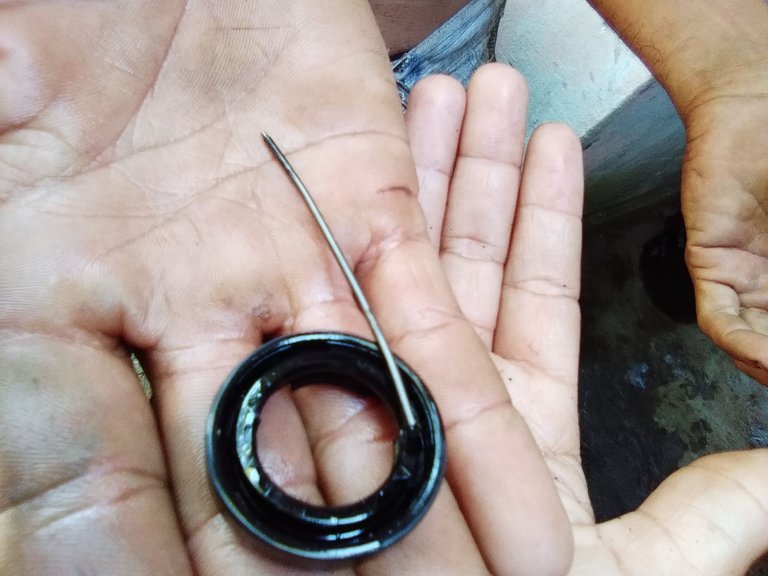 | 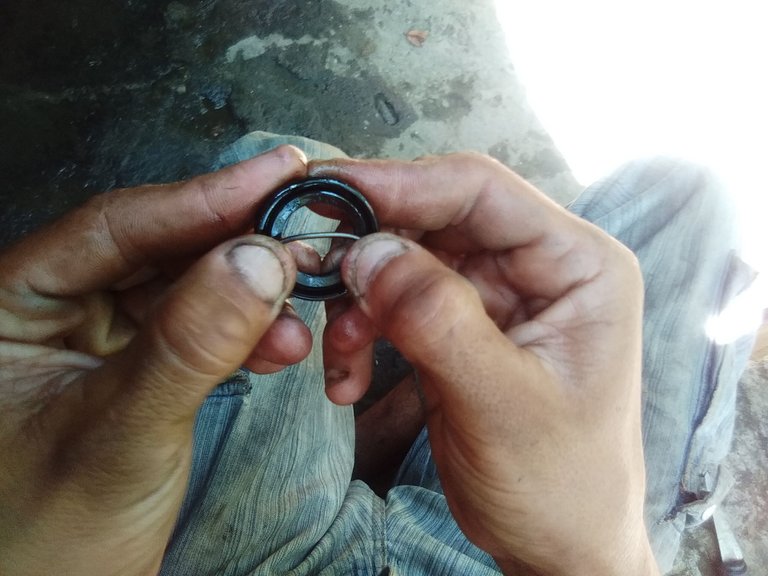 |
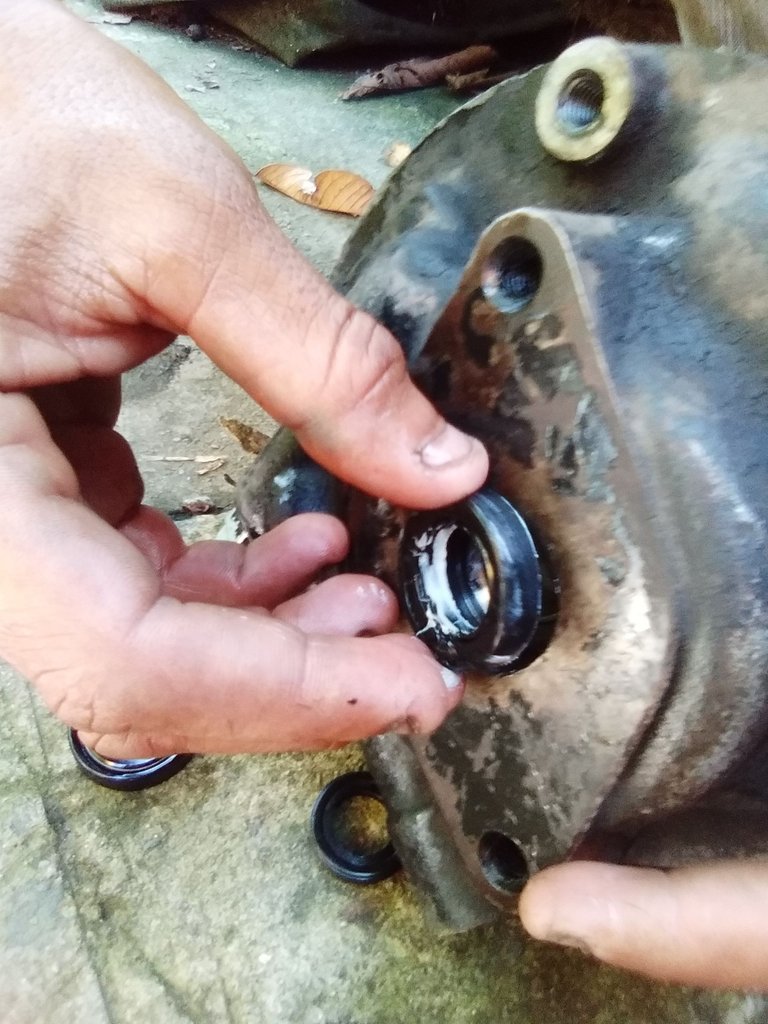 | 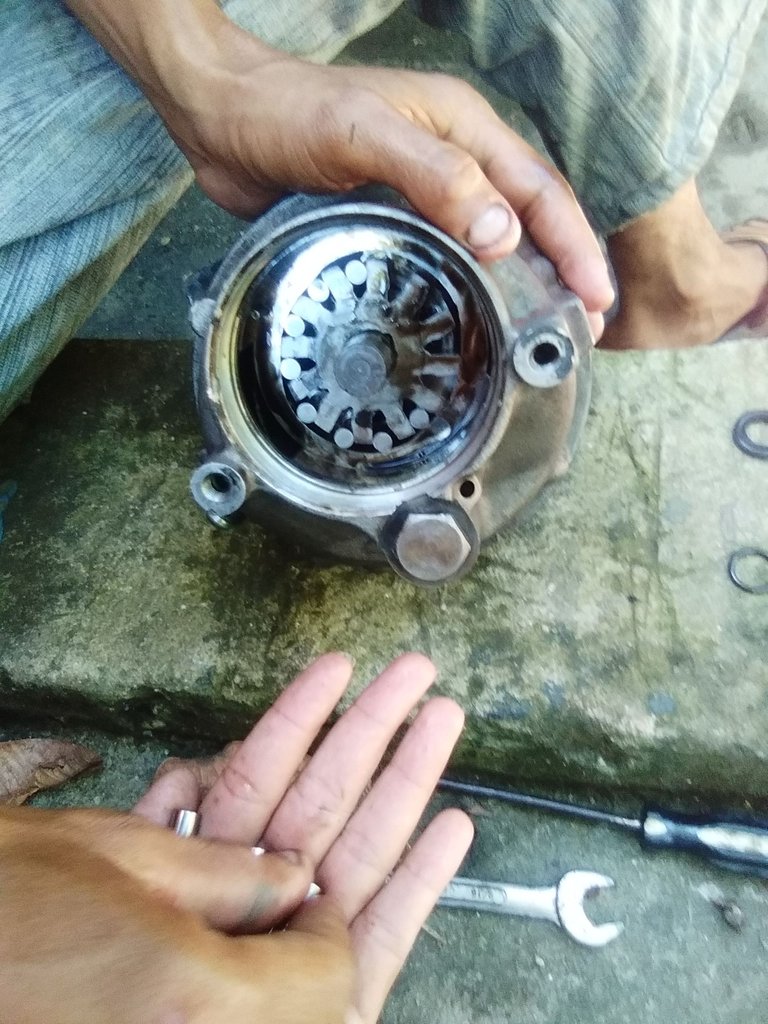 |
Luego que estuvo lista se instaló en el motor del camión, se le colocaron las manguera de aceite una que va al sector de la dirección y otra de retorno a la bomba, también la polea de la correa. Se apretó las tuercas para ubicarlo en el lugar correcto de está manera evitar que la correa quedara floja.
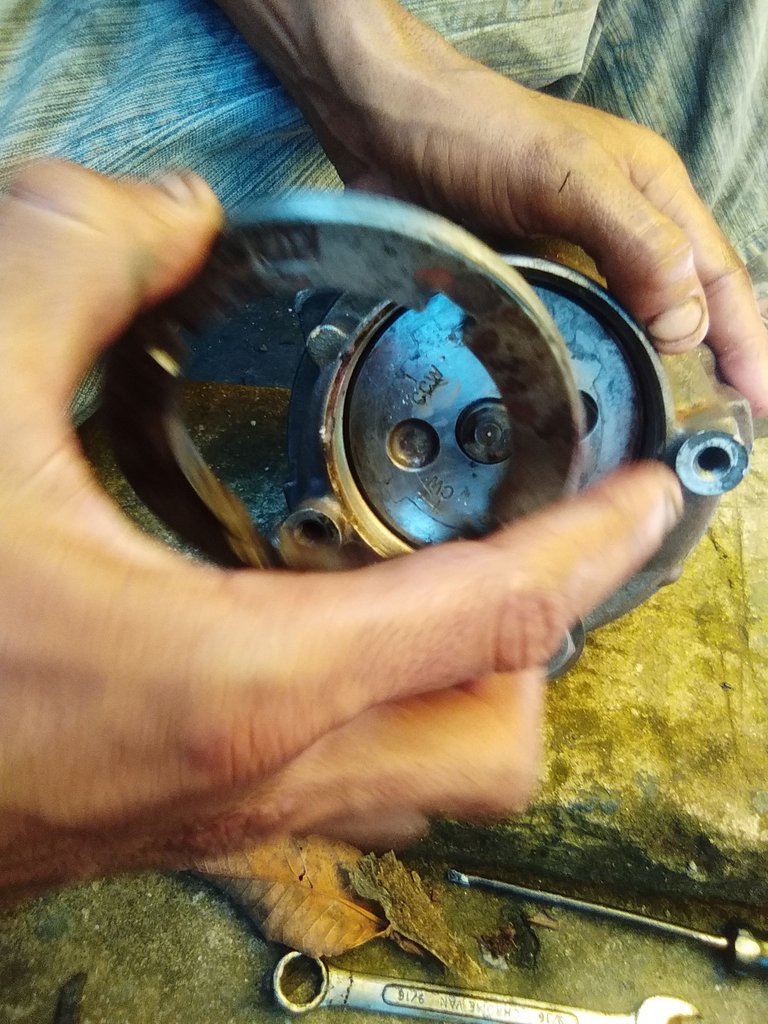 | 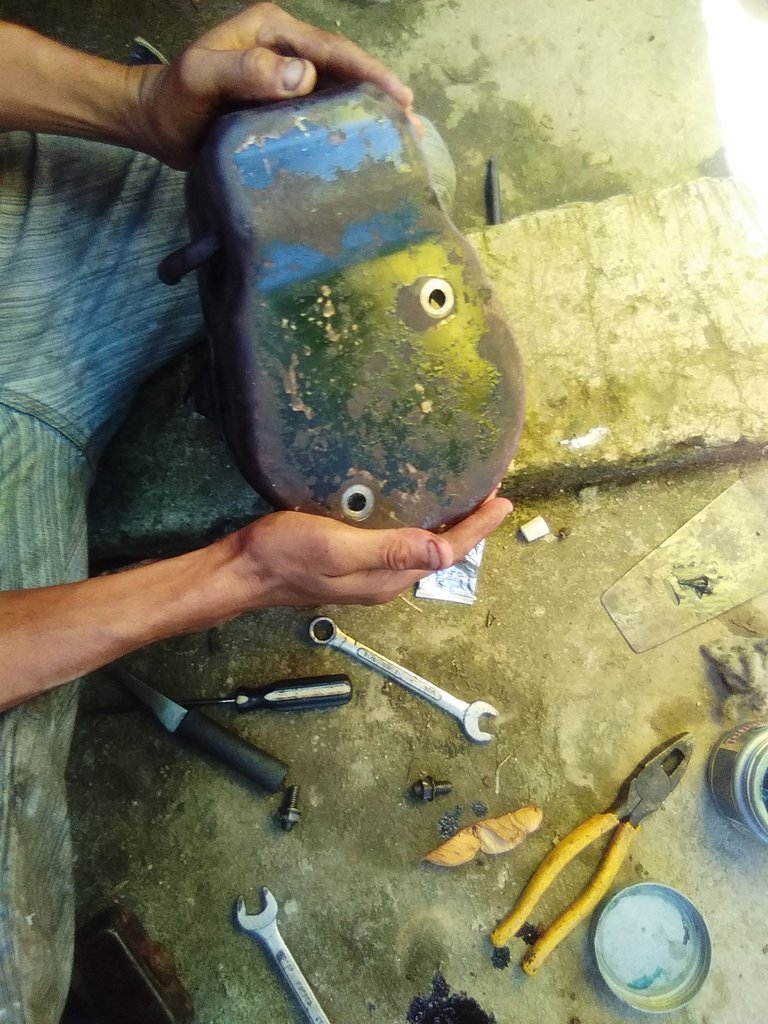 |
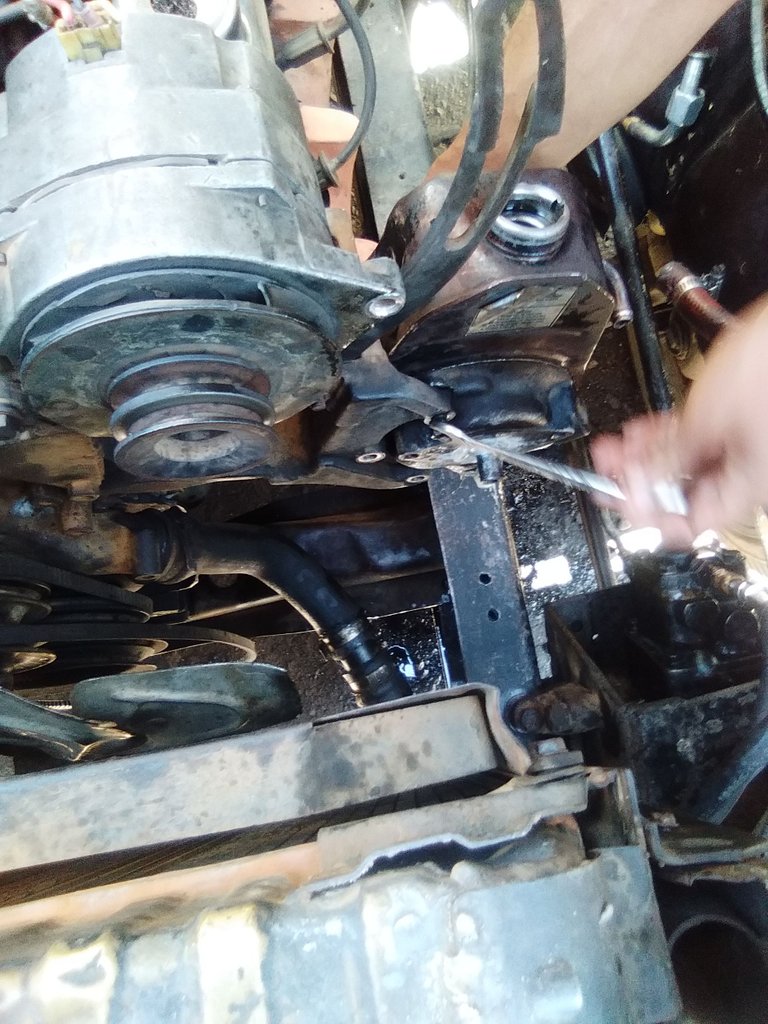 | 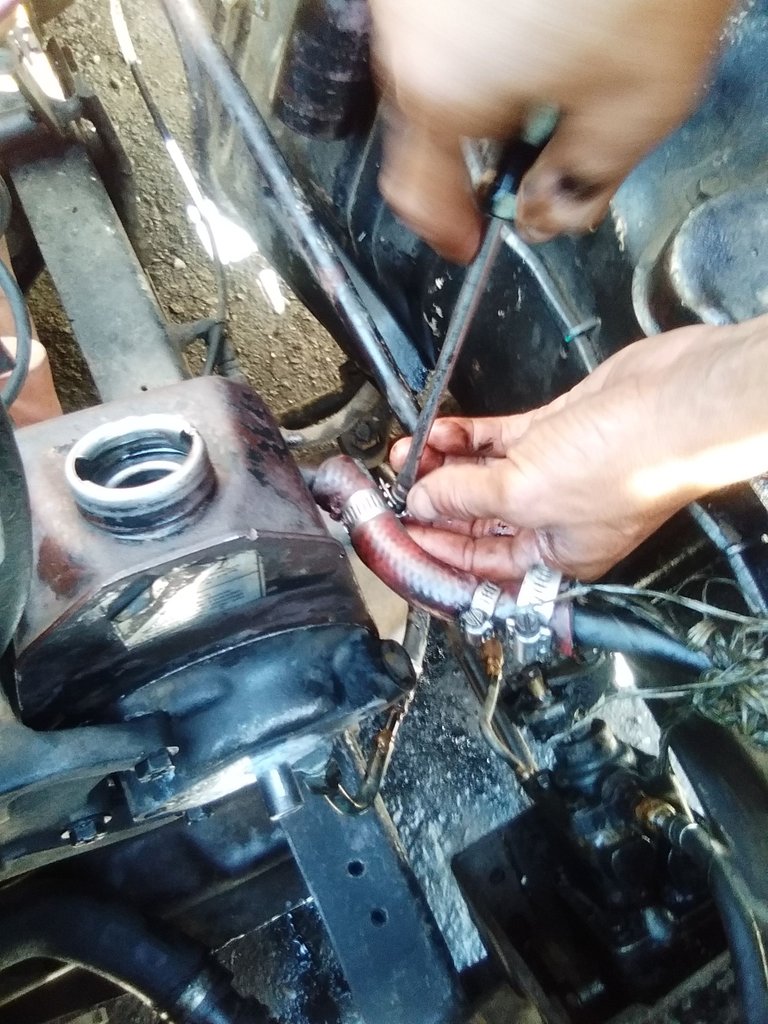 |
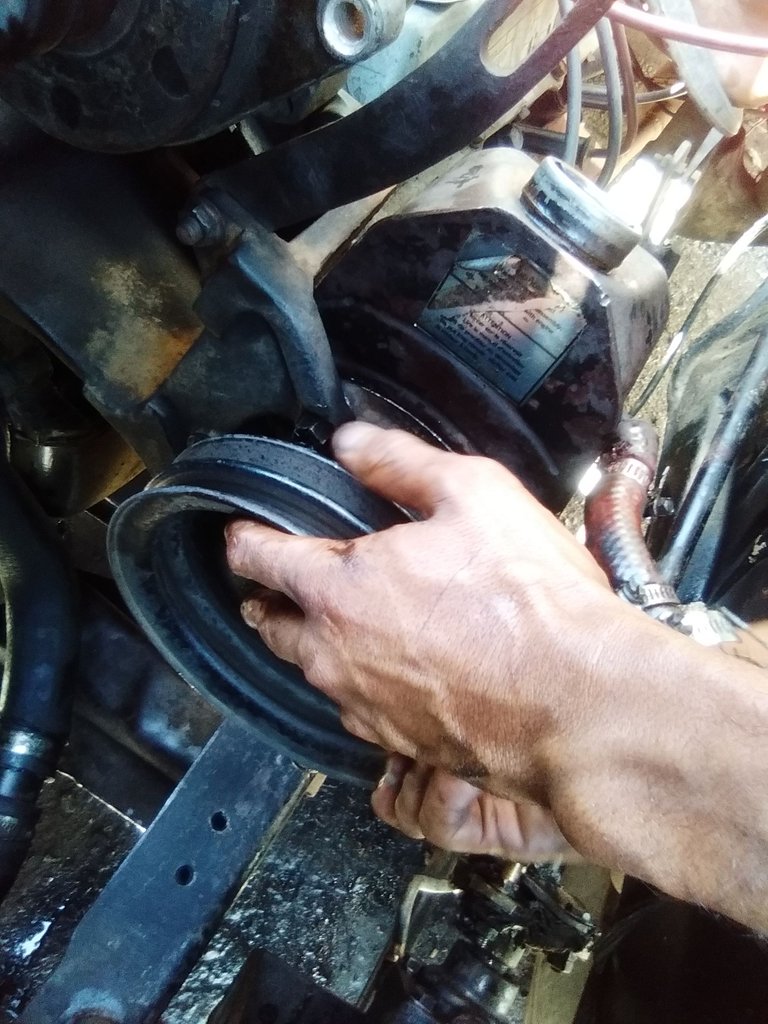 | 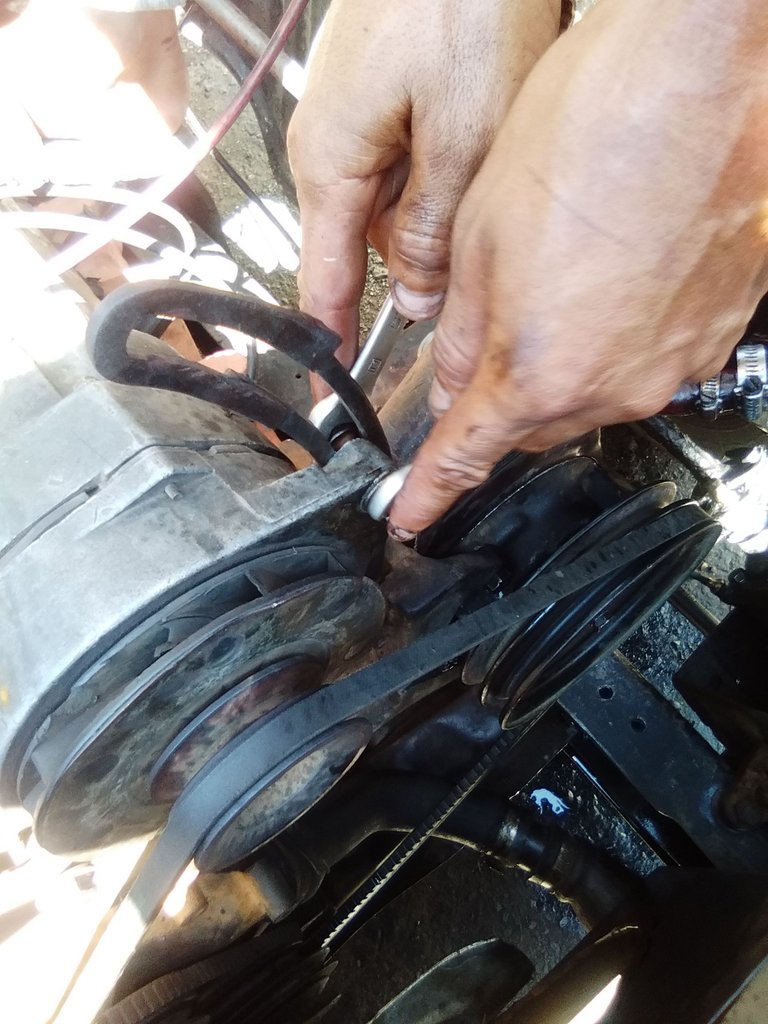 |
Ya instalada se le coloco el aceite al deposito, se encendió el camión pues es la única manera de saber cómo quedó la bomba así revisar si la dirección quedó suave o dura al girar el volante.
De verdad amigos mecánicos para mí es un gusto capturar información útil para todos ustedes, por ahora hasta aquí mi publicación esperando pronto volver con más experiencias. Espero de corazón que les guste el trabajo realizado.
Las fotografías aquí expuestas son de mi propiedad tomadas con mi teléfono Alcatel
La fotografías de portada fueron editada usando la aplicación pixiz.com
ENGLISH

We know that it is easy to replace parts but perhaps the big obstacle that a person may have is the high cost of spare parts, for that reason it is often necessary to repair them.
Hydraulic pumps make it easier to maneuver the steering wheel of the vehicle (in this case truck). The reason for this adjustment is the oil leakage so it was necessary to check to avoid damage to the sector - also called steering box - this would be a risk if not checked, because letting the leak continue this would make the sector is left without lubrication and therefore the vehicle steering would be blocked which would cause an accident, it is worth mentioning that this model of pump has the oil tank.

When uninstalling the steering pump, the oil must be removed from the oil reservoir to separate it from the pump.
 |  |
Then we removed the ring that seals the pump, inside we find parts that is of great importance to know the order in which they are placed at the time of assembly, has a guide that allows better location of these parts, when removing them from the housing you can see the physical condition of each one as they should not be worn, scratched or worn.
 |  |
 |  |
Carefully extracted the two oil seals (stoppers) using a paddle screwdriver and giving light blows, and then check their condition because if they are very sensitive it is not recommended to cut the spring but replace them immediately to avoid oil leaks.
 |  |
After trimming the springs, the retainers were put back in place. Reassembled piece by piece and put the oil reservoir back on.
 |  |
 |  |
After it was ready it was installed in the truck engine, the oil hose was placed, one that goes to the steering sector and another one to return to the pump, also the belt pulley. The nuts were tightened to place it in the right place in order to avoid the belt to be loose.
 |  |
 |  |
 |  |
Already installed the oil was placed in the reservoir, the truck was turned on because it is the only way to know how the pump was left and check if the steering was soft or hard to turn the steering wheel.
Truly mechanical friends for me it is a pleasure to capture useful information for all of you, for now so far my publication hoping to return soon with more experiences. I sincerely hope you like the work done.
The photographs displayed here are my own taken with my Alcatel phone.
The cover photos were edited using the pixiz.com application.
Congratulations @rigel-gladys! You have completed the following achievement on the Hive blockchain and have been rewarded with new badge(s):
Your next target is to reach 2000 upvotes.
You can view your badges on your board and compare yourself to others in the Ranking
If you no longer want to receive notifications, reply to this comment with the word
STOPCheck out the last post from @hivebuzz:
Muy buenas fotos, la verdad que el trabajo del mecanico fue detallado y parte por parte, estuvo de lo mas interesante, y que loco que la unica manera de probarlo sea directo en el camion, uno pensaria que haciendo un puente con la bateria deberia de poder probar si quedo bien hecho el trabajo de la bomba sin tener que montarla, o al menos he visto que hacen eso con otras bombas aqui en hive motors xD Saludos amiga :)